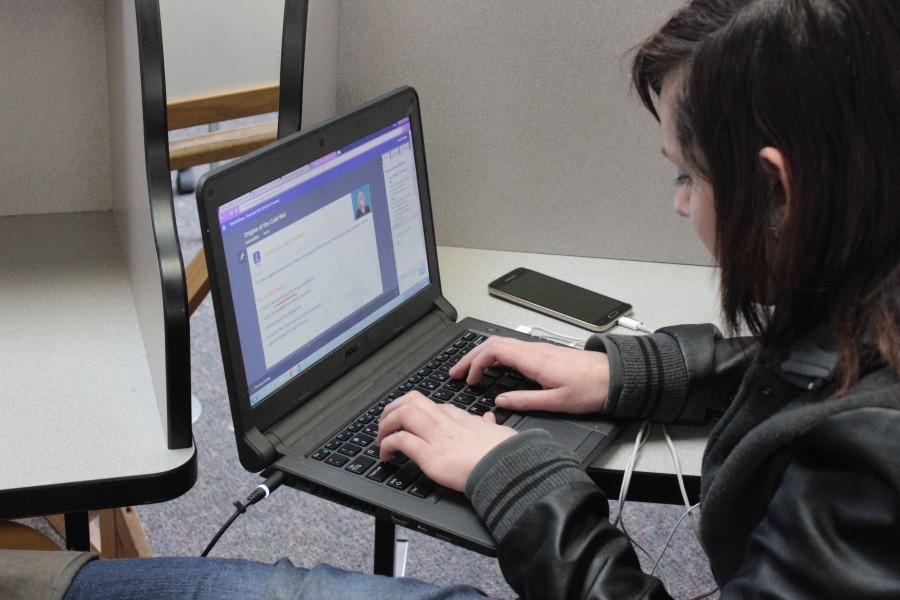Cyber program offers endless opportunities
In 2012, the Freedom Area School District established a cyber center and gave Mrs. Courtney Anderson the position of FASD Cyber Coordinator. Since the creation, the school district has had the opportunity to save money and use the money in-house, rather than giving it to charter schools elsewhere.
“We don’t know the exact figure of what we have saved by operating our own program because we don’t really know how many students would have left Freedom if we didn’t have the program in place,” Superintendent Dr. Jeffrey Fuller said.
The cyber program has the ability to save the district money because it helps keep money in the school district. If a student were to attend a charter school, our district pays that school our school’s tuition rate. Currently, our district spends $10,327.49 for regular schooled students and $20,070.25 for special education students to attend charter schools in the area. The tuition rates are set by the state.
By keeping the students in the district, FASD can use the money for changes inside the schools. The money could go towards providing better technology and teacher training. But, when a student attends a charter school, that money goes towards that schools’ programs.
“Certainly, the reason that individual school districts are developing their own cyber programs is to keep them from having to pay into the charter schools,” Fuller said.
This school year, FASD has 66 students who are enrolled in a cyber or charter school. These enrollments costs our district $763,356.08. Because of the program, our district can use the cyber center to meet the needs of the students in-house.
Students use the cyber program for many purposes: scheduling issues, CTC, credit recoveries, taking electives and for additional schooling. Cyber students are given opportunities that other students may not have.
“Schools have to find a way to meet the needs of those kids. So, you do that through the development of the cyber programs because they are much more flexible,” Fuller said.
According to Anderson, four years ago, the program held about 25 students. Since she has been in charge of the program, there has been an increase to the upper 60s. Currently, she has 58 students with the numbers fluctuating throughout the years and all year along.
“The courses are independent and you need to plan accordingly to complete all of your assignments in a timely manner,” Anderson said. Unlike working in regular classrooms, students have to work on their own, but are able to consult teachers with curriculum questions.
Taking a cyber course may seem easy, but the courses are made to have rigorous lessons. Students are expected to meet deadlines, study for tests and finish any and all assignments. One bonus cyber students have over other students would be the ability to work on all or any assignments on weekends and over breaks. The students can go back and review any content if needed.
By offering cyber courses, the school district can provide students with courses and credits that they would have to seek elsewhere.
“We can do that same program, we can do it here but better, we can keep the kids, we can keep the money that goes with those kids and better yet, those kids graduate with that Freedom diploma,” Fuller said.
The cyber program offers the students and district with many opportunities. Keeping students within the district and within the guidelines of the district, they can ensure when they graduate they receive what they need.
“We want them to have a Freedom diploma because we think that stands for something,” Fuller said.



